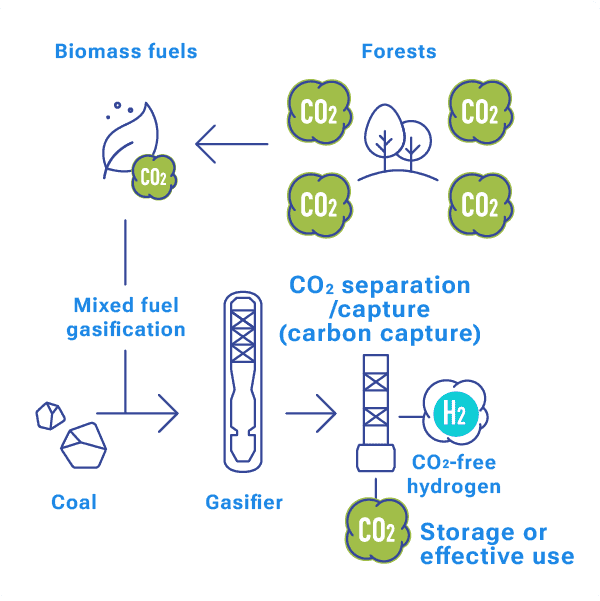Challenges for
Hydrogen Energy
Helping to Achieve Carbon Neutrality throughout Society
As an energy source, hydrogen produces no CO2 when used and can thereby contribute to the reduction of CO2 emissions in industries where electrification is difficult, including those that involve ships, steel manufacturing and chemical plants. However, hydrogen is almost never found naturally in its elemental form on Earth. The J-POWER Group will help to reduce society’s overall carbon footprint by working to achieve the production, use and supply of CO2-free hydrogen, which emits zero CO2 even during manufacturing.
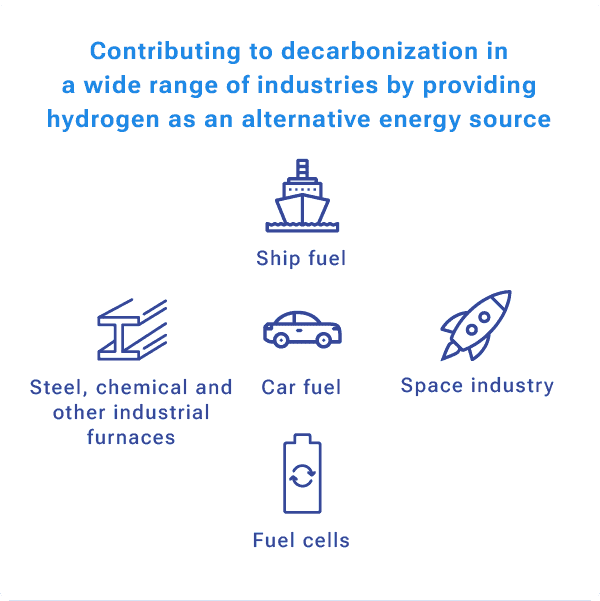
Creating Hydrogen Without Emitting CO2
J-POWER aims to produce CO2-free hydrogen using various methods. One method involves combining CO2 separation and recovery technology with gasification technology, which we have continued to research in the field of thermal power. We are conducting demonstration tests for this hydrogen production method and use in Japan and internationally.
Applying our operational experience and knowledge of hydroelectric and wind power generation gained over many years, we aim to manufacture hydrogen using renewable energy.
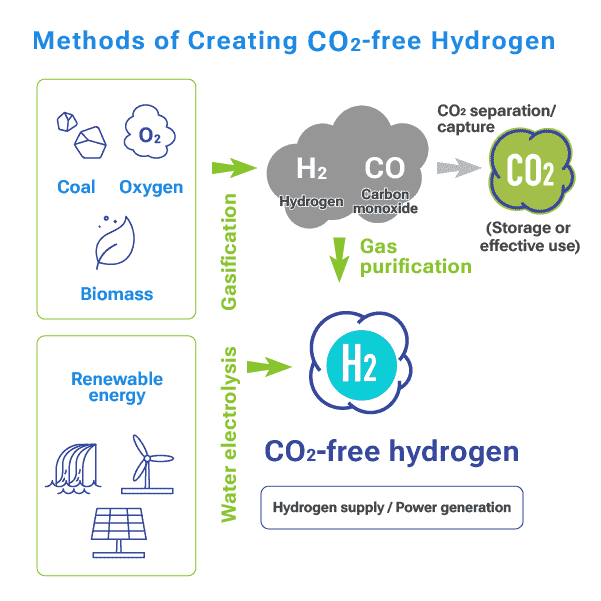
Capturing and Using CO2
The ability to process captured CO2 is essential when making CO2-free hydrogen. The J-POWER Group is also looking into technologies for capturing carbon deep underground (Carbon Capture, Usage and Storage (CCS) technology), and carbon recycling so that CO2 can be reused as a resource.
In July 2022, we began carbon recycling demonstration tests for liquefying captured CO2 and reusing it as a resource for promoting plant growth.
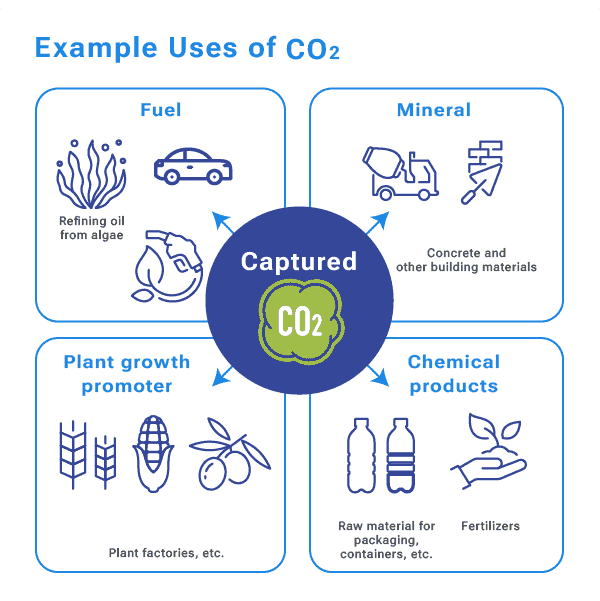
Hydrogen
Supply Chain
Aiming for CO2-Free Hydrogen Power Generation in Japan
Through the Osaki CoolGen Project* in Japan, the J-POWER Group is conducting phased demonstration tests with a view to commercializing CO2-free hydrogen power generation. Currently, as our verification of coal gasification technology and carbon separation and capture technologies advances, we are testing power generation using gas with a higher hydrogen concentration. In addition, we are working on demonstration tests that incorporate fuel cells, which will also contribute to hydrogen use and hydrogen power generation.
* Osaki CoolGen Project: Jointly conducted with the Chugoku Electric Power Co., Ltd. as a project subsidized by the New Energy and Industrial Technology Development Organization (NEDO), a national research and development organization.
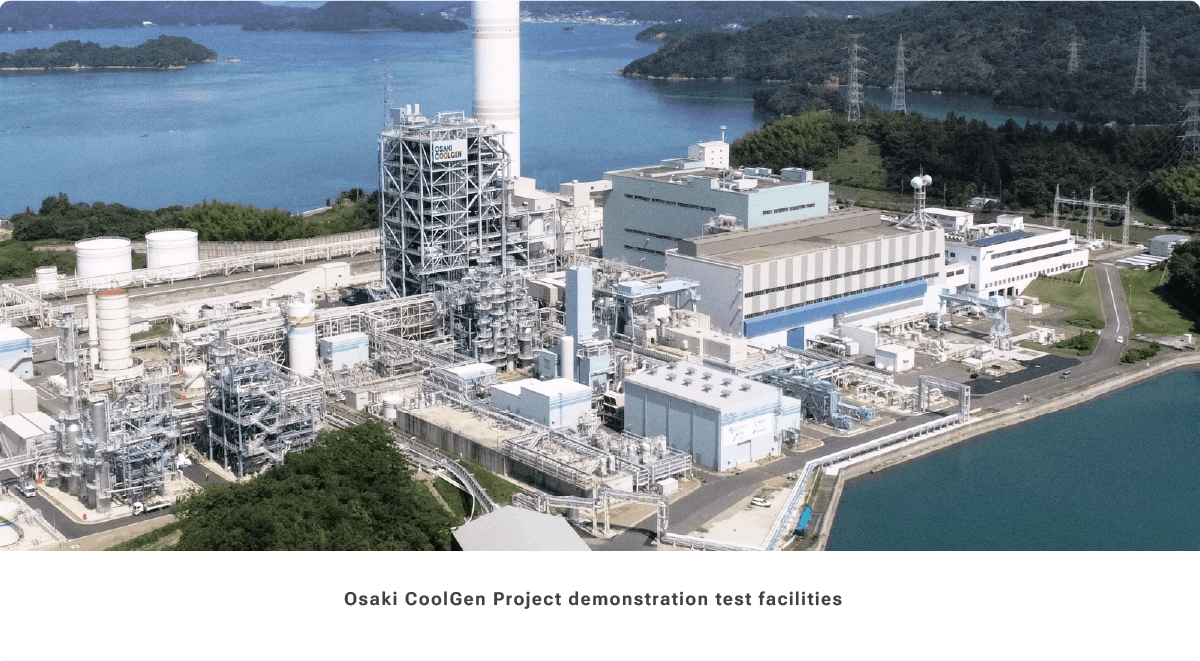
CO2-free Hydrogen Production Overseas
J-POWER participated in a test project for building a supply chain that uses hydrogen. The supply chain extends from the gasification of brown coal in Australia and its transportation to Japan. This test was successfully completed during 2022. Our role was in gasifying brown coal and refining hydrogen, and we plan to use the expertise gained from this project to provide a large supply of CO2-free hydrogen in the near future through carbon capture and storage.
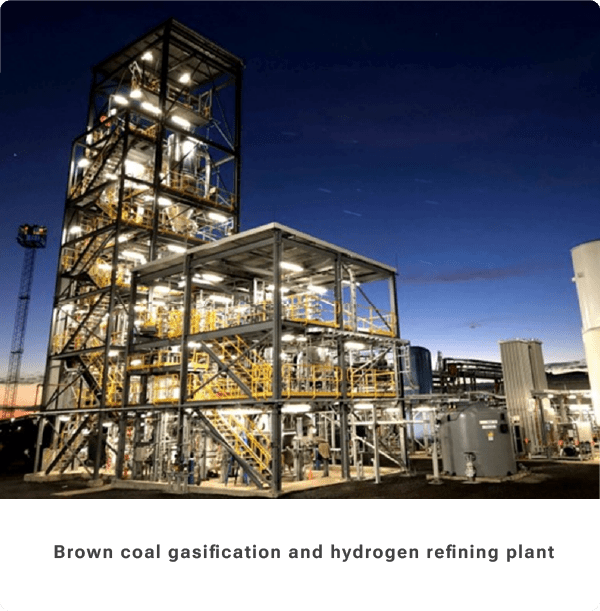
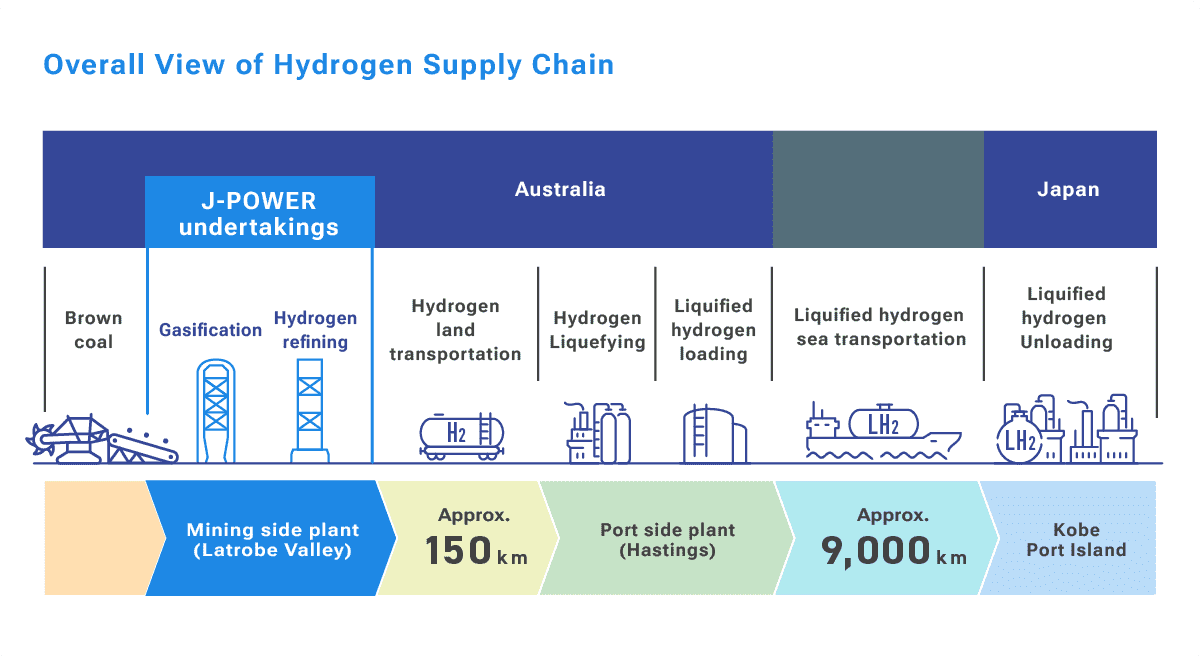
J-POWER
GENESIS Vision
Steadily Moving toward Carbon Neutrality
Reducing CO2 emissions as soon as possible while continuing to provide a stable supply of electricity is an important part of the J-POWER Group’s mission. To accomplish this, we will work to implement J-POWER GENESIS Vision, a next-generation energy conversion system with gasification technology at its core. This system will use solid fuels such as coal and biomass as raw materials not just for power generation, but also for the manufacture and supply of hydrogen and the creation of chemical products, minerals and more. The GENESIS Matsushima Plan, which launched in April 2021, is our first step in that process. As part of the plan, we will upcycle the Matsushima Thermal Power Plant with numerous enhancements including gasification equipment while making greater use of the existing facilities. This will enable power generation using gas that contains hydrogen, with the aim of CO2-free hydrogen power generation in the near future.
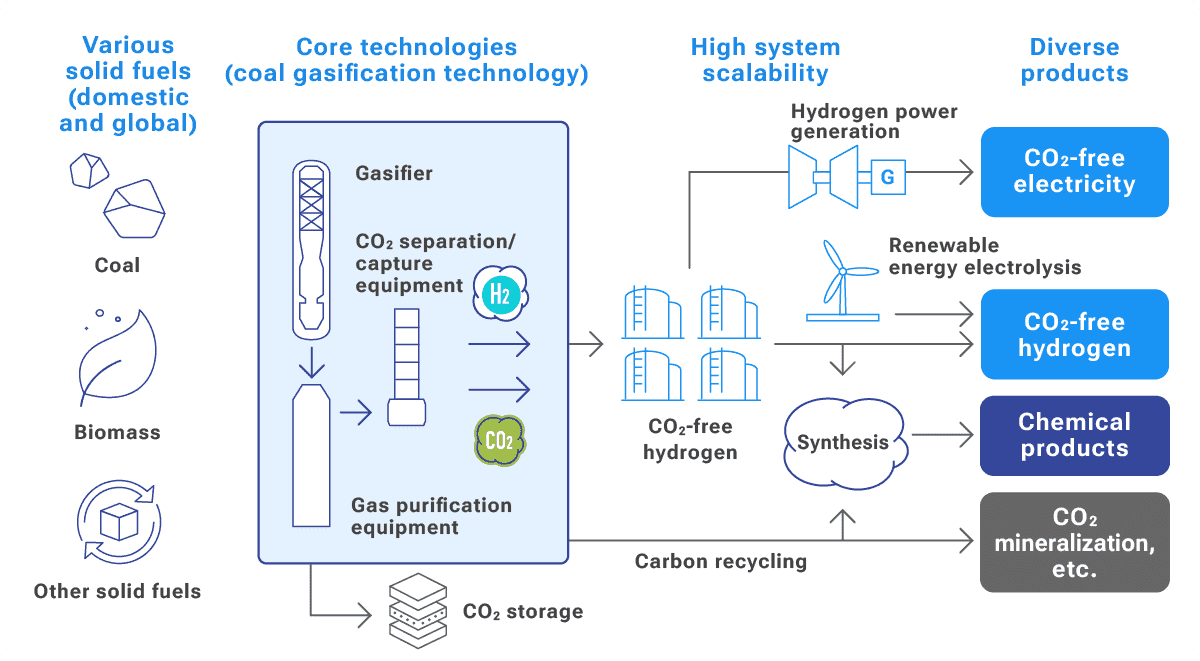
From “Neutral” to “Negative”
We are also working on manufacturing CO2-free hydrogen by mixing plant-based biomass fuels with coal, a solid fuel, and then gasifying them.
Plants absorb CO2 in the atmosphere during their growth process. If that CO2 is removed from the plant-based fuels and properly treated when manufacturing hydrogen in this way, the amount of CO2 in the atmosphere will be reduced.
This will make it possible to go beyond carbon neutrality (net zero CO2) and achieve “negative emissions” when generating electric power.
